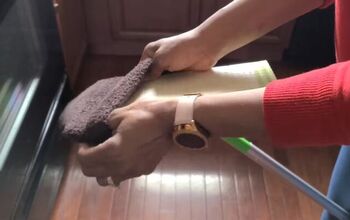Minimalism That Lasts: 7 Practical Rules to Streamline Your Life

It’s impossible to keep up with minimalism. Tired of hearing about minimalism? It's all about maximalism now—after all, you only live once, so why not buy whatever you want? It's just another trend…
James Clear once said, "You do not rise to the level of your goals; you fall to the level of your systems." These words have proven true for me, especially when it comes to my minimalism journey.
Table of contents
I've watched countless documentaries, read articles and books, and tried many minimalism tips and tricks. Over time, I've taken bits and pieces of everything and finally put systems in place to make minimalism work for me in the long run.
Today, I want to share some of my favorite strategies that I still use and probably will for a very long time. I should mention that although I call these "rules," I’m using the term loosely—they're more like guidelines that I've adjusted to fit my current life. I hope you'll do the same.
Buy Nice or Buy Twice
I always stick by this rule: "Buy nice or buy twice." It has never proven me wrong. But it's important to establish what "nice" really means. It doesn't always mean something more expensive or designer. I've found that "nice" is more about durability, material, and performance. I've had multiple instances where I bought two different products from the same company, only to find a stark difference in quality. So, it's crucial to be a smart consumer.
What helps me is doing a bit of research beforehand and learning which materials usually last longer. I also pay attention to how to take care of what I buy. For clothing, I check the zipper, buttons, hem, and stitching. When I find a good quality item, I feel it's always worth going for it, even if it's a little more expensive. It's so much cheaper in the long run than having to buy the same thing over and over again.
30-Day Waiting Rule
We're all so connected to our tech devices now, and it feels like we're just one click away from buying whatever we want at any given time. With credit card information saved or digital wallets on our phones, purchasing has become too easy—and I’m not sure that’s a good thing.
I've talked about this a lot, but having a wish list has been the most helpful tool for slowing me down and filtering out impulse purchases. Personally, I like to wait 30 days before making a purchase, but the bigger the purchase, the longer I wait.
Right now, my wish list is pretty long because I've been trying not to buy anything while preparing for a move. I’ve just been living life, noting the gaps, and adding to the list over time. This will come in handy when I settle into my new place.
One In, One Out
There's a trend going around on TikTok called "undercore consumption." It's all about keeping items longer and using up what you have before purchasing something new. It sounds like it should be the norm, but in our materialistic culture, this feels like a counter-movement—much like minimalism. Honestly, I’m all for it.
I don't see anything wrong with glamorizing cutting up old T-shirts to use as rags or showing off empty bottles of toiletries you've used up. I just hope this isn't a passing trend and that we can really return to this mindset and lifestyle.
At the core of this trend is the "one in, one out" rule, which I regularly apply to my own life. If I'm going to buy something new, I must use up and get rid of the existing or old item. This way, we use up all the products we buy instead of just accumulating clutter.
No Duplicate Rule
The "no duplicate" rule goes hand-in-hand with the previous point. Just as it sounds, it's about avoiding owning multiple items that essentially serve the same purpose. Of course, this doesn’t apply to everything—like linens, where I need multiple sets because I’m not always doing laundry—but for many things in my life, this rule is key.
Whether it's skincare, makeup, toiletries, kitchen stuff, or office supplies, I stick to this rule. Even for clothing, I have multiple jeans, but they’re all very different in style, so I can create various silhouettes and outfits.
25-Minute Rule
The 25-minute rule, also known as the Pomodoro Technique, is a time management method where you set a timer for 25 minutes and focus on your work. When the timer goes off, you take a 5-minute break and repeat. Something about breaking up work into intervals makes it feel more manageable, which is why it works for me.
Twenty-five minutes doesn't seem like much, so within that time, I don't allow myself to check my phone, emails, or get distracted. I just focus on what I need to do—whether it's work, working out, doing chores, or decluttering. I use this technique for all kinds of tasks.
The point is that even 25 minutes of focused work is far more efficient than hours of unfocused work where you're constantly distracted. To me, this is the beauty of minimalism—or essentialism, whatever you want to call it.
90/90 Rule
The 90/90 rule is a really helpful decluttering strategy. If you haven't used an item in the past 90 days and don't think you'll use it in the next 90 days, it’s probably time to let it go. I've mentioned the hanger trick before, where you turn all your hangers backward and see which items you wear over 90 days by turning them forward as you use them.
There are so many reasons it's difficult to let go of things, but one of the biggest is uncertainty—what if I need this item again? The 90/90 rule works because it puts things into perspective. If you haven't used it in 90 days, it's probably clutter. And if I do need it again, I know I can find it, borrow it, or buy it again if it’s not too expensive. This rule makes it easier to let go.
True Cost
When we're buying something, we often focus on the price. But as a minimalist, I always see the cost beyond the price tag. Some questions I ask myself include: How much energy and time will this take from me? How much value will it give me? How much space will it take up? Does it serve multiple purposes? After considering all these factors, I arrive at the true cost.
My goal is never to live so frugally that I never make mistakes, am never wasteful, or never overextend myself. I know that's not realistic. However, having this mindset helps me avoid exhausting all my resources on the wrong things because, after all, we only have a limited amount of resources.
Let me know in the comments which rule was the most helpful for you. Until next time, take care, and I'll talk to you soon.


































Comments
Join the conversation